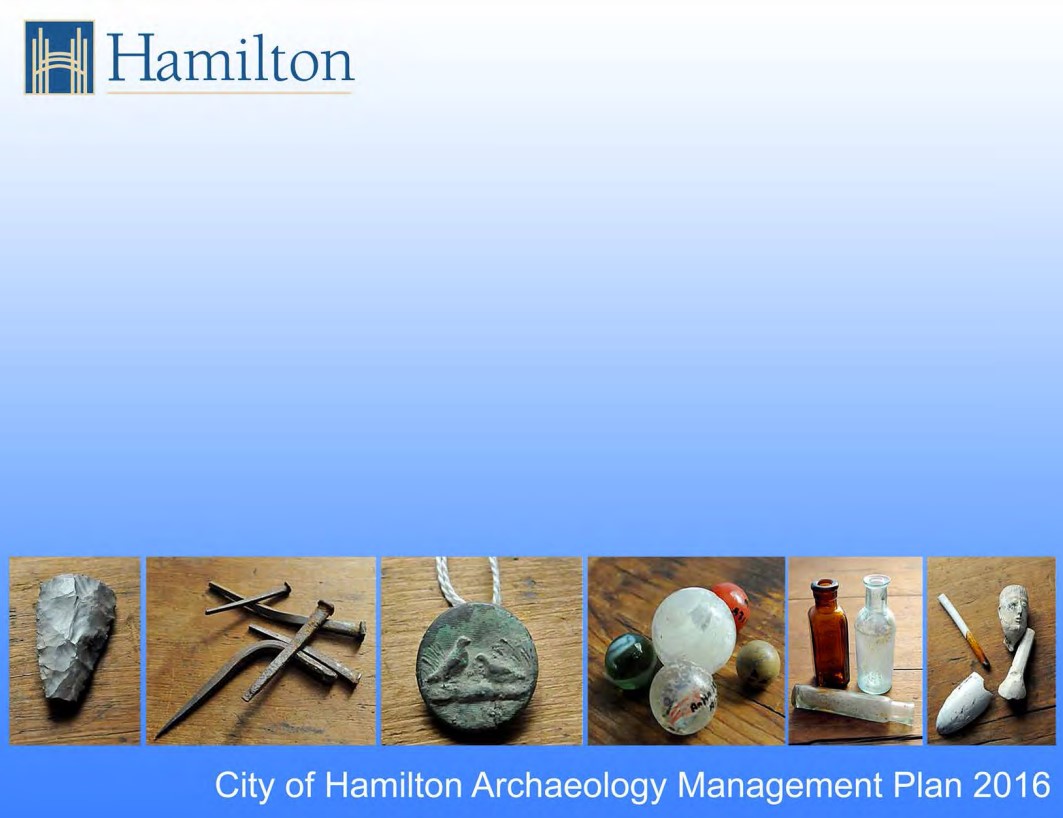Archaeology Management Plan

Alissa Golden, Heritage Specialist
Heritage Resource Management
Call 905-546-2424 ext. 4654
Email [email protected]
The Archaeology Management Plan (AMP) guides the City of Hamilton in managing its archaeology. The Plan is written for a wide range of users, providing both general information about archaeology in Hamilton and policies and protocols for specific users.
Due diligence is required to ensure that archaeology is considered in all planning matters and that these concerns are fully addressed throughout the development process.
The AMP outlines the City’s roles and responsibilities to ensure the management of archaeology is systematic, consistent and transparent across the City’s jurisdiction.
Indigenous Archaeological Monitoring Policy
The City of Hamilton acknowledges Indigenous peoples as the original peoples of this land and recognizes that Indigenous peoples have an inherent and rights-based interest in the archaeology and heritage of their ancestors. The City of Hamilton is working to improve existing Municipal-Indigenous relationships, including how Indigenous communities are involved in the archaeological assessment process. The City's Indigenous Archaeological Monitoring Policy provides a interim process for engaging with Indigenous communities on City-initiated archaeological assessment work and for coordinating and funding Indigenous monitoring, until relationship agreements are developed with each Indigenous community and adopted by the respective Councils.
Download Indigenous Archaeological Monitoring Policy
Archaeology Management Plan
The Archaeology Management Plan consists of eight sections. Each section is designed to be read independently according to the user’s needs.
- Section 1: City of Hamilton Archaeological Management Plan - Introduction to archaeology in Hamilton, how archaeology is administered and the reasons for developing the AMP.
- Section 2: First Nations, Natives and Archaeology in Hamilton - Describes the significant interest and role of the First Nations and Natives in the archaeology of the City of Hamilton.
- Section 3: Municipal Archaeology - Provides an overview of the City’s priorities and interests in the management of archaeology, and identifies four roles of the City in this context; Landowner, Proponent, Approval Authority, Trustee.
- Section 4: Landowner - Can be used by companies and staff working on or managing City-owned properties, such as parks and real-estate.
- Section 5: Proponent - Centered on infrastructure projects within the City, primarily through the Class Environmental Assessment process, this can be used by staff and consultants.
- Section 6: Approval Authority - Focused on work arising through applications and development arising through the Planning Act, this section can be used by property owners or their agents and staff.
- Section 7: Trustee - The City’s broader role in the management of public archaeology for its citizens is outlined in this section, and is of general interest.
- Section 8: Implementation and Monitoring - Details the implementation and monitoring of the AMP.
Note: The AMP does not affect landowners in the management of archaeology on their own property. It only applies to properties subject to Planning Act or Environmental Assessment Act legislation. However, private owners with archaeological resources on their properties are invited to adopt the policy and protocol outlined in the report in order to manage these resources with due diligence and are welcome to contact City staff for further information and assistance.
Staff Report: City of Hamilton Archaeological Management Plan (PED15108)

